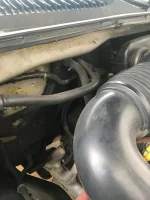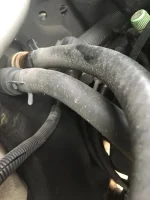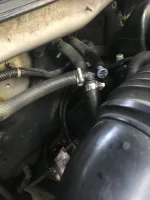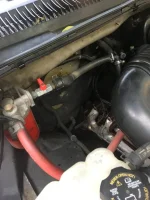Truck suddenly sprung a leak at the heater core inlet quick connector, the one on the right hand side. I plan on changing both hoses and the two quick connectors.
RockAuto has both the plastic quick connects and aluminium ones. The aluminium ones are listed as OE FIX but are double the price. Should I get the aluminium ones or stay with the plastic ones?
RockAuto has both the plastic quick connects and aluminium ones. The aluminium ones are listed as OE FIX but are double the price. Should I get the aluminium ones or stay with the plastic ones?




